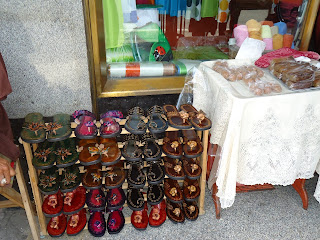 |
| Stores on Frederick street |
 |
| Stores on Frederick Street |
"urban retail is clusters of stores, offering neighborhood goods and services,
accessible by surrounding
residential areas within walking
distance and often drawing
from a wider market area" (Griffin, 2011)
The convenience of open air and short walking distances from store to store adds to the very local or neighborly feel which urban spaces usually lack, especially in the midst of goods that are generally foreign. Additionally, there are vendors along the roadside that engage in their share of retailing as part of the informal industry. Some sell mainstream goods such as clothes and shoes while others settle for something more local such as craft and jewelry.
 |
| Local craft (leather shoes above and jewelry below) |
The issue in my opinion lies in overcrowding. How long will the city be able to keep up the growing numbers of stores and informal stalls that are now beginning to crowd up the sidewalk?

Marcelle, what do you think of the issue of mainstreaming goods? I was surprised in Dominica how many of the crafts, even those that said *Dominica*, were made in China. It seems that cheap Chinese goods have flooded many of the Caribbean markets. Local products are diminishing in quality and number, and increasing in price so that they're becoming out of reach of the average the average.
ReplyDeleteWhat else can you tell us about the Social Geography of retailing? -- is it social?